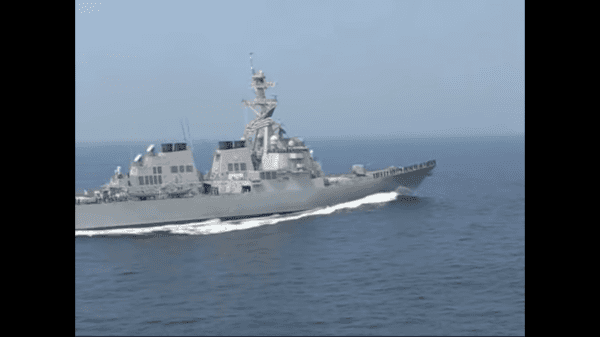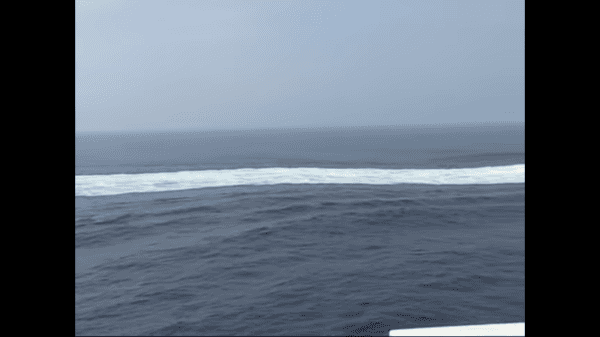The Arleigh Burke-class of guided missile destroyers (DDGs) is the U.S. Navy’s first class of destroyer built around the Aegis Combat System and the SPY-1D multi-function passive electronically scanned array radar. The class is named for Admiral Arleigh Burke, the most famous American destroyer officer of World War II, and later Chief of Naval Operations. The class leader, USS Arleigh Burke, was commissioned during Admiral Burke’s lifetime. The Arleigh Burke destroyers replaced the Charles F. Adams destroyers and was first commissioned on July 4, 1991 according to the U.S. Navy.
This footage was filmed in Aug. 2007 from the flight deck of the USS Eisenhower just off the coast of Norfolk.
This high-speed hairpin turn of the U.S. Navy Arleigh Burke-class destroyer is an amazing maneuver, and superb performance for a 505-foot-long, 9,000-ton guided missile destroyer. This demonstration confirmed exactly why these Arleigh Burke-class warships are such prized assets within the U.S. Navy, since they possess impressive speed (in excess of 35 knots) and extreme maneuverability.

(indecorum/YouTube)
Check out the massive waves left in the wake of the warship as it glides across the water. It looks like it is leaving a white carpet behind.
Then with all weight leaning to one side, the turn is beautifully crafted, leaving the onlookers in awe. Four gas turbine engines driving twin controllable propellers and a total horsepower of 100,000 make these kinds of maneuvers possible.
The video below shows the USS Gonzalez (DDG-66) performing the evasive maneuver. Take a look:
These destroyers operate both independently or within carrier strike groups, surface action groups, amphibious ready groups, and underway replenishment groups.
Each ship contains two watchstander nerve centers — one located in the combat information center and the other on the ship’s bridge — that work in conjunction to safely navigate the ship. A highly experienced senior tactical action officer is in charge of tactical maneuvering.

(indecorum/YouTube)
Also, to ensure that maneuvers like this one are successful, there are at least five watchstanders and at least two junior officers on duty to prevent any collisions. An officer of the deck is present in the absence of the captain. There is a conning officer who gives orders to the helmsman on appropriate speeds and course, and a quartermaster who makes sure the ship is on course and at the right rate of speed. The boatswain’s mate of the watch handles the ship’s internal PA system and takes contact reports from the aft lookout.
These incredible ships require a number of highly experienced and trained people to make sure that they perform up to standard and carry out the expectations of any mission they’re assigned to — whether training or the real deal.



